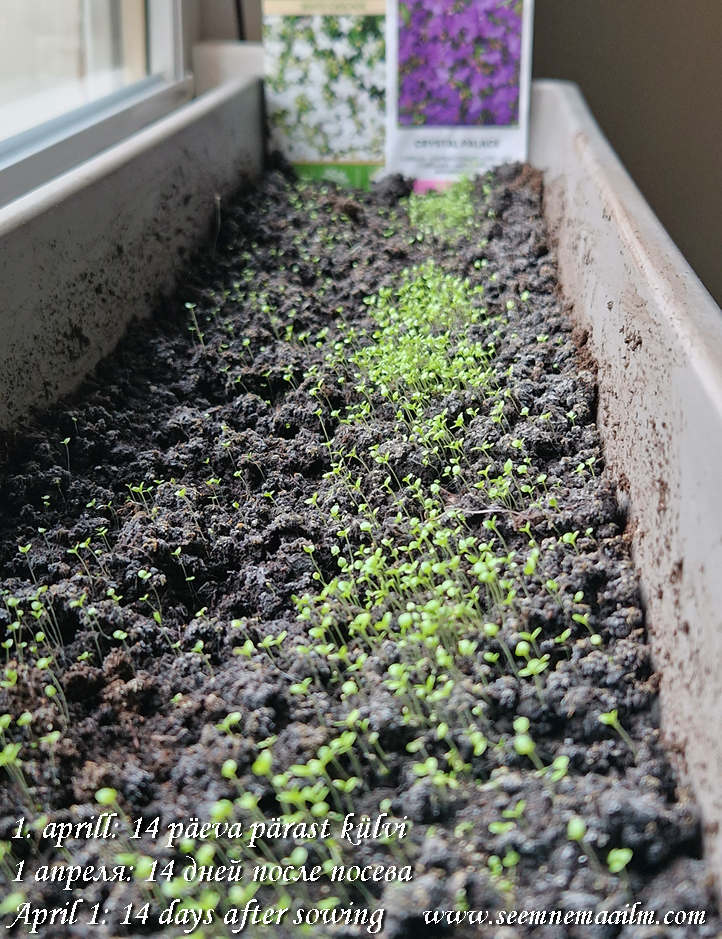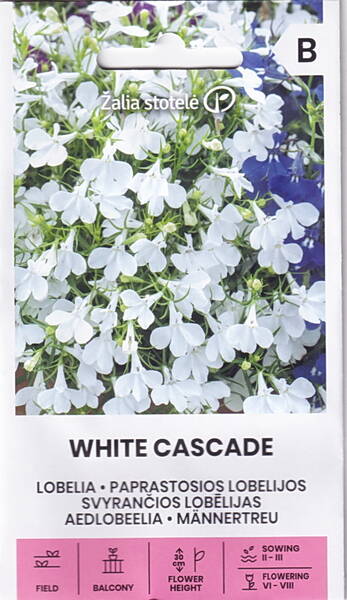Your shopping cart is empty!
Edging lobelia "White Cascade"
Fountains lobelia "White Cascade".
Location: this is a heat-loving and light-loving plant, but can also tolerate partial shade.
Soil: Lobelia grows well on loose, loamy or sandy soils. Does not tolerate excess organic fertilizers.
Care: for lush and long flowering, she needs periodic top dressing and abundant watering in dry weather.
On soils that are too greasy, fertilized with organic matter, lobelia stretches, forms a mass of leaves and blooms weakly ...
After the first wave of flowering, the plants are pruned at a height of 5 cm. After that, they again form shoots, and the second wave of flowering occurs.
When caring for lobelia, you should pay attention to watering: when the root ball dries, its stems are bent. Diseases and pests have not been identified.
Reproduction: seedling way.
Seeds for seedlings are sown in February-March. 1.0 g = 29000-30000 seeds (very small).
Seedlings appear together 10-15 days after sowing. The seedlings are so small that they dive no earlier than a month after the appearance and several plants together. After 12-15 days, seedlings are fed with complex fertilizer. Planted in open ground from mid-May at a distance of 10-15 cm from each other. When the plants reach 2.5 cm in height, you can pinch the tops for better tillering.
Well-hardened seedlings withstand frosts down to -1-2°C.
Uses: Lobelias are good in borders, borders, in groups and arrays on the lawn, in garden vases and balcony boxes. Ampel varieties are good in hanging baskets and planters.
Partners: Lobelia goes well with red pelargoniums, shiny salvia, yellow mimulus.
It looks best up close.
Location: this is a heat-loving and light-loving plant, but can also tolerate partial shade.
Soil: Lobelia grows well on loose, loamy or sandy soils. Does not tolerate excess organic fertilizers.
Care: for lush and long flowering, she needs periodic top dressing and abundant watering in dry weather.
On soils that are too greasy, fertilized with organic matter, lobelia stretches, forms a mass of leaves and blooms weakly ...
After the first wave of flowering, the plants are pruned at a height of 5 cm. After that, they again form shoots, and the second wave of flowering occurs.
When caring for lobelia, you should pay attention to watering: when the root ball dries, its stems are bent. Diseases and pests have not been identified.
Reproduction: seedling way.
Seeds for seedlings are sown in February-March. 1.0 g = 29000-30000 seeds (very small).
Seedlings appear together 10-15 days after sowing. The seedlings are so small that they dive no earlier than a month after the appearance and several plants together. After 12-15 days, seedlings are fed with complex fertilizer. Planted in open ground from mid-May at a distance of 10-15 cm from each other. When the plants reach 2.5 cm in height, you can pinch the tops for better tillering.
Well-hardened seedlings withstand frosts down to -1-2°C.
Uses: Lobelias are good in borders, borders, in groups and arrays on the lawn, in garden vases and balcony boxes. Ampel varieties are good in hanging baskets and planters.
Partners: Lobelia goes well with red pelargoniums, shiny salvia, yellow mimulus.
It looks best up close.

Edging lobelia, fountains lobelia. Bot. syn.: Lobelia erinoides L.












